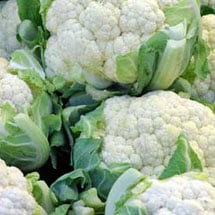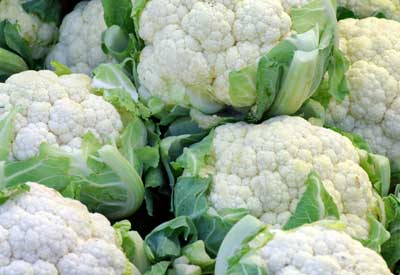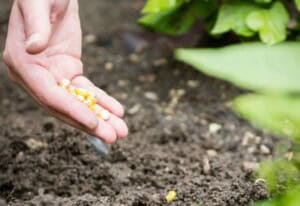For many home gardeners, growing cauliflower can be a difficult task. This nutritious plant requires undisturbed growth for the head — or flower — to develop. As a result, planting success is often influenced by several environmental factors including cool temperatures, pest problems and moisture. Some gardeners will even set a few cauliflower plants out every week, hoping that at least a few of them will receive the proper conditions to thrive.
Cauliflower (Brassica oleracea var. botrytis) is a member of the Brassica family that also includes kale, cabbage, kohlrabi, Brussels sprouts and broccoli. Its compact flower heads are packed with vitamins and minerals, and offer super-sized portions of fiber, antioxidants and other phytochemicals.

FREE SHIPPING!
Cauliflower Seeds
Similar to its broccoli cousin, a well-grown cauliflower is a thing of beauty.
View allWith a larger, paler head than its broccoli cousin, a well-grown heirloom cauliflower is a gardeners pride. Planting instructions are included with each seed packet and shipping is FREE!
Quick Guide: Planting, Growing & Harvesting Cauliflower
- Start seeds 10 weeks before last frost or direct seed when soil temps are between 65°-75℉ and weather is still cool
- Plant in an area with full sun and soil rich in organic matter
- Water frequently and watch for pest problems
- Pests and diseases include root maggots, cutworms, aphids, flea beetles, cabbage worms, cabbage loopers and club root.
- Harvest before hot weather hits
- Eat fresh or freeze for winter meals
Site Preparation
A cool season biennial which is grown as an annual, cauliflower requires full sun and regular water. The soil should be rich in organic matter and nutrients. To prevent insect and disease problems, avoid planting in spots where other brassicas have been raised the previous three years. Read our article on crop rotation here.
Tip: Humus is the key ingredient to a great cauliflower harvest. Add ample amounts of compost or well-rotted animal manure to the soil prior to planting.
How to Plant
For spring crops, plant from nursery cell packs or start seeds indoors ten weeks before last frost. If planting transplants, use only seedlings with a tiny bud in the center. If a bud is not present, the plant will not form a head. If planting from seed, sow directly into loose, fast-draining soil in fall for winter harvest or early spring for a late spring harvest. Allow 18 to 24 inches between plants and 2 to 3 feet between rows.
As temperatures warm, mulch the planting site with compost, leaves or straw to cool the soil, conserve moisture and prevent weeds. Apply a liquid organic fertilizer at 1/2 strength every two weeks until harvest.

Harvesting and Storage
The edible portion of the plant is the flower which is harvested before it actually blooms. Pick cauliflower when the heads are full but before the sections begin to loosen. The timing depends on the variety, so begin checking plants daily when the heads reach 3 to 4 inches across. Plants will reach maturity 50-95 days after transplanting.
Note: Plants will bolt (go to seed) quickly in warm weather. Check often when temperatures begin to rise.
Wash and store cauliflower in the refrigerator — no longer than 10 days — for fresh use. It will also freeze well right after harvest and retains much of its nutritional value.
Insect & Disease Problems
Some of the garden pests associated with cauliflower are root maggots, cutworms, aphids, flea beetles, cabbage worms and cabbage loopers.
Cauliflower is also susceptible to club root, a fungal disease that can be introduced into your garden by infected plants. To avoid this problem, start your own plants from seed, rather than purchasing starts from a nursery.
Seed Saving Instructions
This biennial will cross-pollinate with all other Brassica oleracea, so isolate varieties by one mile the second year when going to seed. Do not harvest heads on plants you intend to save for seed. Carefully dig the plants and pot them in sand. Store plants between 32-40˚F. Plant back out in early spring and allow to bolt. Harvest seed pods when dry and clean by hand.











